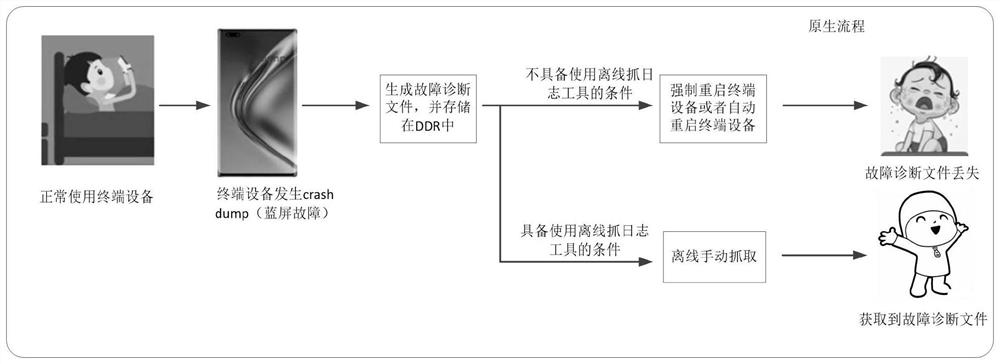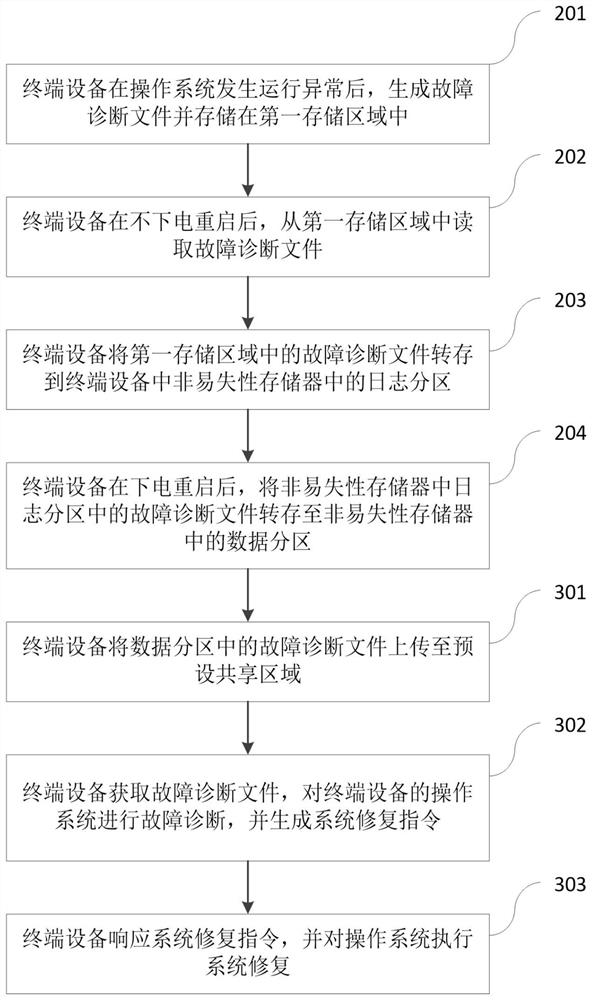Fault diagnosis file acquisition method and device
A fault diagnosis and file acquisition technology, applied in the direction of non-redundancy-based fault handling, response error generation, instruments, etc., can solve problems such as loss of fault diagnosis files and difficulty in obtaining fault diagnosis files
- Summary
- Abstract
- Description
- Claims
- Application Information
AI Technical Summary
Problems solved by technology
Method used
Image
Examples
Embodiment Construction
[0064] The technical solutions in the embodiments of the present application will be described below with reference to the drawings in the embodiments of the present application.
[0065] The terms used in the following examples are for the purpose of describing particular examples only, and are not intended to limit the application. As used in the specification and appended claims of this application, the singular expressions "a", "an", "said", "above", "the" and "this" are intended to also Expressions such as "one or more" are included unless the context clearly dictates otherwise. It should also be understood that in the following embodiments of the present application, "at least one" and "one or more" refer to one, two or more than two. The term "and / or" is used to describe the relationship between associated objects, indicating that there may be three relationships; for example, A and / or B may indicate: A exists alone, A and B exist at the same time, and B exists alone, ...
PUM
 Login to View More
Login to View More Abstract
Description
Claims
Application Information
 Login to View More
Login to View More - Generate Ideas
- Intellectual Property
- Life Sciences
- Materials
- Tech Scout
- Unparalleled Data Quality
- Higher Quality Content
- 60% Fewer Hallucinations
Browse by: Latest US Patents, China's latest patents, Technical Efficacy Thesaurus, Application Domain, Technology Topic, Popular Technical Reports.
© 2025 PatSnap. All rights reserved.Legal|Privacy policy|Modern Slavery Act Transparency Statement|Sitemap|About US| Contact US: help@patsnap.com



